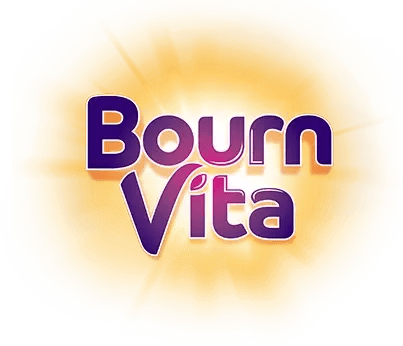- Improves Heart Health
- Enhances Coordination and Balance
- Supports Stronger Bones and Muscles
- Boosts Mood and Mental Focus
- Encourages Discipline and Routine
- Teaches Breath Control
- Easy to Make Playful
- No Equipment, No Fuss
- Pairs Well with Healthy Snacking
Introduction
Sometimes the simplest exercises are the best, and jumping jacks are a great example. One movement that’s jumping, stretching, and coordination all in one, your child gets a full body workout that’s energizing and fun. As per the study published in, Comptroller and Auditor General of India, jumping jacks are more than just a warm-up; they’re good for heart health, build muscle strength, balance, and even focus. For kids with boundless energy, this quick and fun move is a great way to channel that energy into something healthy and productive.

What’s great about jumping jacks is that they require no equipment, very little space, and can be done anywhere, indoors on a rainy day or in the park before playtime. They’re also a great way to introduce rhythm and movement patterns, which help with motor skill development. And when done regularly, they gently increase stamina and strengthen bones.
As a parent, guiding your child through jumping jacks can be a fun bonding moment. By adding songs, counting out loud or turning it into a mini challenge, you make fitness fun without the pressure. Whether as part of a morning routine or a quick break between study sessions, jumping jacks is a fun and effective way to keep your child active, happy, and healthy.
Benefits and Fun Ways For Parents To Add Jumping Jacks In Kids' Routine

If you're looking for a quick, effective, and fun way to keep your child active, jumping jacks are a great place to start. This classic movement may look simple, but it delivers a full-body workout that supports strength, stamina, coordination, and heart health—all without the need for equipment or a large space. For growing children, jumping jacks are also a great way to build body awareness and release excess energy in a structured yet joyful way.
You can easily turn this into a game or family routine, and it works for kids of different ages and fitness levels. Adding playful music, countdowns, or variations can keep your child motivated and engaged. Here are 9 wonderful benefits of jumping jacks and how parents can guide kids to get the most from this fun and functional movement.
Improves Heart Health
According to a study published in, Ann Pediatr Cardiol. 2023, as a cardio activity, jumping jacks get your child's heart rate up in a safe and controlled way. This helps strengthen the heart muscle, improve blood circulation, and increase stamina. Doing just a few sets daily keeps your child’s cardiovascular system healthy and active.
Enhances Coordination and Balance
Jumping jacks require your child to move arms and legs rhythmically, improving body coordination and spatial awareness. It also supports better posture and balance, which are essential as your child grows and participates in more complex physical activities.
Supports Stronger Bones and Muscles
As per a study published in Arch Osteoporos. 2018, the repeated motion of jumping helps develop stronger leg muscles and bone density. This is especially important in the growing years. For children who are lactose intolerant, pairing regular movement with calcium-rich, dairy-free foods like ragi, almonds, or fortified plant-based milk can further support bone health.
Boosts Mood and Mental Focus
Study conducted by J Obstet Gynaecol India. 2022, suggests that exercise releases endorphins, the natural feel-good hormones. Jumping jacks act like a quick reset button, helping kids feel happier, more focused, and ready to learn. This makes them a great activity between study sessions or during screen breaks.
Encourages Discipline and Routine
Introducing jumping jacks as part of a daily routine, such as morning wake-ups or evening playtime, instills a sense of discipline and self-care. Over time, it becomes a healthy habit your child carries into later life, reinforcing that movement is a regular part of well-being.
Teaches Breath Control
Jumping jacks help children synchronize their breath with motion. According to a study published in Cureus. 2024, this not only helps improve lung capacity but also supports emotional regulation. Controlled breathing while moving prepares your child to handle excitement or anxiety more calmly.
Easy to Make Playful
You can create challenges like “How many jacks in 30 seconds?” or add music to make it more fun. Kids respond better when movement feels like play. Turn it into a dance-off or partner activity to keep their interest alive and their bodies moving.
No Equipment, No Fuss
Jumping jacks can be done indoors, outdoors, or even while watching TV. This makes them ideal for families with limited space or busy schedules. You can even include them in birthday parties or group activities to move a regular part of social fun.
Pairs Well with Healthy Snacking
After a good round of jumping, offer your child something nourishing. For lactose-intolerant kids, a fruit bowl, roasted makhana, or an almond milk smoothie can help restore energy. This teaches your child to recognize hunger cues after activity and make mindful food choices.
Conclusion

Jumping jacks offer more than just physical activity; they bring movement, structure, fun, and bonding into your child’s day. By guiding them gently and keeping it playful, you support not just their fitness but also their joy and confidence in movement.
Her love for storytelling began with reading her grandfather’s speeches, where Tarishi saw the power of words in creating lasting memories. Combining her passions for food and writing, she has turned her life into a fulfilling path of sharing stories that celebrate flavours and how food brings communities together.
The views expressed are that of the expert alone.
The information provided in this content is for informational purposes only and should not be considered a substitute for professional medical advice, diagnosis, or treatment. Always seek the advice of your physician or another qualified healthcare provider before making any significant changes to your diet, exercise, or medication routines.
References
https://pmc.ncbi.nlm.nih.gov/articles/PMC11470265/
https://pmc.ncbi.nlm.nih.gov/articles/PMC6244891/
















